Once you nail down your wedding date and book your wedding stationery designer, it’s time to begin drafting your guest list. Brushing up on the rules of how to address your wedding invitations as you collect addresses ensures your list is properly formatted. I offer calligraphy guest addressing and digital envelope printing for all my clients. And I always request that they double-check their list for proper formatting and etiquette before submitting their final list to me.
The rules of envelope addressing etiquette can be confusing and are based on a few key considerations: the guest’s marital status, title, and living situation.
You may be wondering if following the rules of etiquette is still important in our modern culture. I say a resounding “YES!” for a couple of reasons. First, taking the time to thoughtfully consider each guest’s specific situation honors and respects them as individuals. Second, correct formatting clearly identifies who is invited to the wedding and helps you avoid awkward conversations down the line.
Most modern couples use a single outer envelope instead of a formal setup with an inner and outer envelope. Because of this, the examples I present below follow the etiquette for a single outer envelope.
How many invitations should I order?
Because not every guest will need their own invitation, your wedding guest count and invitation count will be two different numbers. In general, I recommend you order one invitation suite per household, but there are a few exceptions to this rule.
Traditional etiquette dictates the following exceptions to the “one per household” rule:
- Children over 18 years old who still live at home with their parents should receive their own invitation.
- Unmarried couples who are not living together should each receive their own invitation if both partners are invited guests (no plus one).
- Adult roommates should each receive their own invitation, so long as they are all invited guests (not someone’s plus one)
Plus One
If your budget allows, plus ones are a great way for your guests to feel more comfortable at your wedding. Etiquette indicates that if you know the name of your guest’s plus one, you should use it on the envelope, following the name of your guest. The words “and guest” can be written after your guest’s name if the plus one seat is open-ended. To further clarify the number of guests invited, I suggest including a line on the reply card that says, “We have reserved 2 seats in your honor.”
Children Under 18
Children under the age of 18 should receive the same invitation as their parents. Their names should be written on the envelope, on the line below the parents’ names, to show they are invited. “Miss” is the acceptable choice if she is under 18 and should be spelled out, not abbreviated. A boy under the age of 18 has no honorific or, in formal circumstances, can be referred to as “Master.”
If the envelope is addressed only to the parents, it is assumed the children are not invited. To further clarify the number of guests invited, I suggest including a line on the reply card that says, “We have reserved 2 seats in your honor.” Children over the age of 18 and living at home should receive their own invitation.
Honorifics
Honorifics are often where the confusion begins. An honorific title conveys respect for the guest’s position or rank. These titles, as well as gender and/or the guest’s relationship to you, determine how you present the guests’ names on the envelopes. When you address your guests by their correct or preferred titles, you recognize their importance to you. Your wedding invitations help set the tone for a thoughtful and meaningful wedding.
Titles such as “Doctor” or “The Honorable” should be spelled out. Courtesy titles such as “Mr.” or “Mrs.” are generally abbreviated.
If the guest has a suffix to their name, “junior” and “senior” should be spelled out in all lowercase when addressing the envelope formally. If using informal addressing, the suffix can be abbreviated and should be capitalized.
Formatting Addresses
Always spell out the elements of an address on a wedding invitation envelope. This includes street names and state names. You can reference this blog post for more information on wedding invitation etiquette and grammar. As always, refer to the queen of etiquette herself, Emily Post.
How to Address Wedding Invitations
Couples
MARRIED COUPLE WITH THE SAME LAST NAME
For heterosexual couples, use “Mr.” and “Mrs.” and spell out the husband’s first and last name. If you decide to include the husband’s middle name, it should be spelled out, not abbreviated by an initial.
Many modern women dislike having their name left out and lumped in with their husbands. If the couple is sensitive to this, separate their names with the husband listed first.
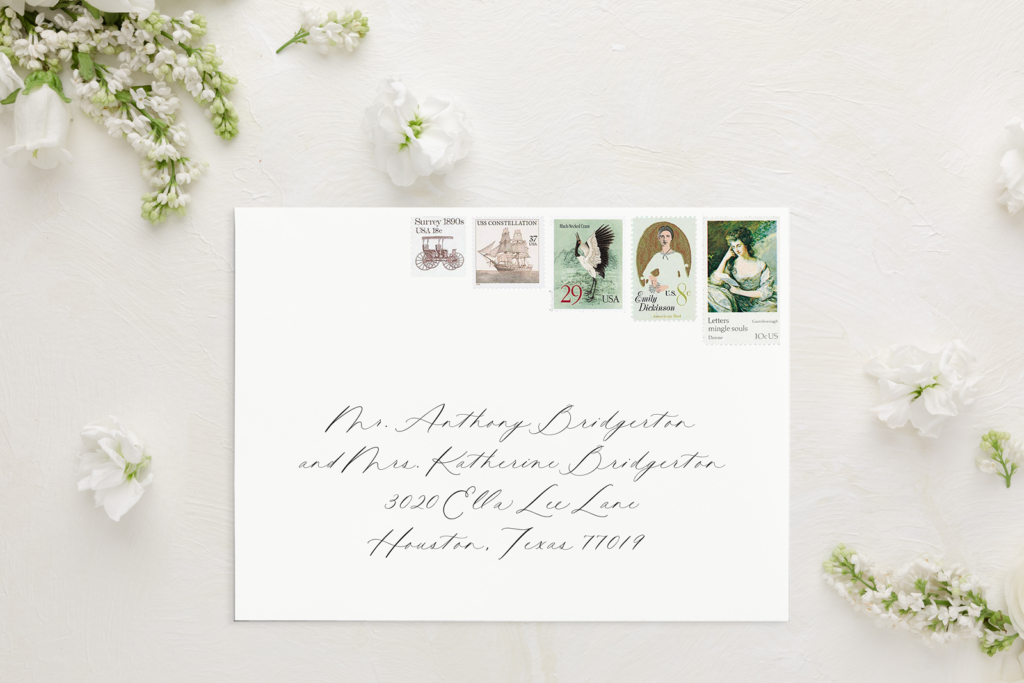
For same-sex couples, use “Mesdames” for women and “The Messrs.” for men.
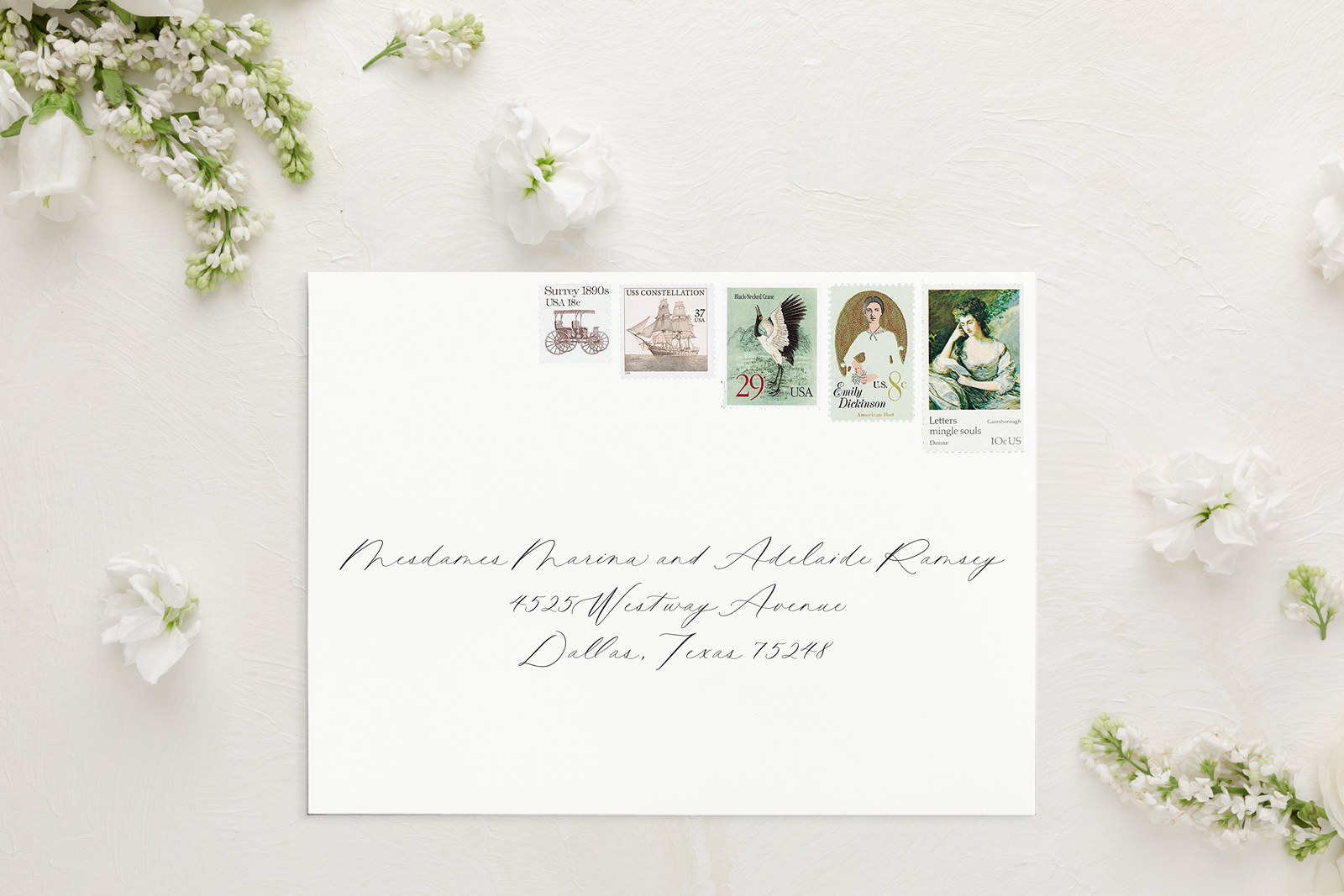

MARRIED COUPLE WITH DIFFERENT LAST NAMES
For heterosexual couples, the woman’s name is always listed first. List on one line if the names are short enough to fit. For same-sex couples, it is acceptable to put either guest first. You can list the person you are closest to first or address them alphabetically.
MARRIED COUPLE WITH ONE HYPHENATED LAST NAME
For couples with a spouse who has chosen to hyphenate their last name, the unhyphenated name should be listed first.
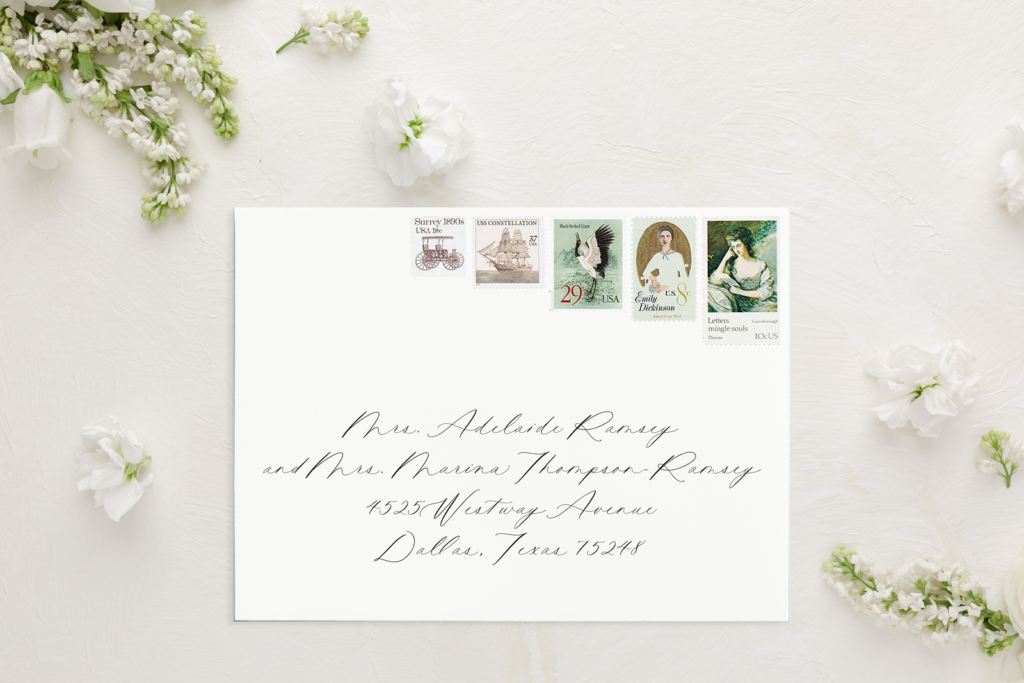
UNMARRIED COUPLE LIVING TOGETHER
Invitations to a couple who are unmarried but live at the same address are addressed to both people. List the person to whom you are closest first unless her partner has a higher rank.
ENGAGED COUPLE
If you know that the woman is choosing to take her husband’s name when they get married, you may address them as “The Future Mr. and Mrs.” If you are unsure, use the etiquette for an unmarried couple living together.

FAMILY
When inviting an entire family, you can choose to list the family name for a more informal approach or the parent’s names followed by the children’s names on the second line.
Earned Honorifics
MARRIED COUPLES, DOCTORS
If a person holds a medical degree, the word “Doctor” should be spelled out. If they are a PhD doctor, their honorific may be abbreviated to “Dr.” If the wife is a doctor, list her first with her title. If the combined names are too long to fit on one line, list them separately. In the case of married doctors and the wife has taken her husband’s last name, it is proper to use “The Doctors.”
In the case of married doctors and one has chosen to hyphenate their name, the unhyphenated name should be listed first.
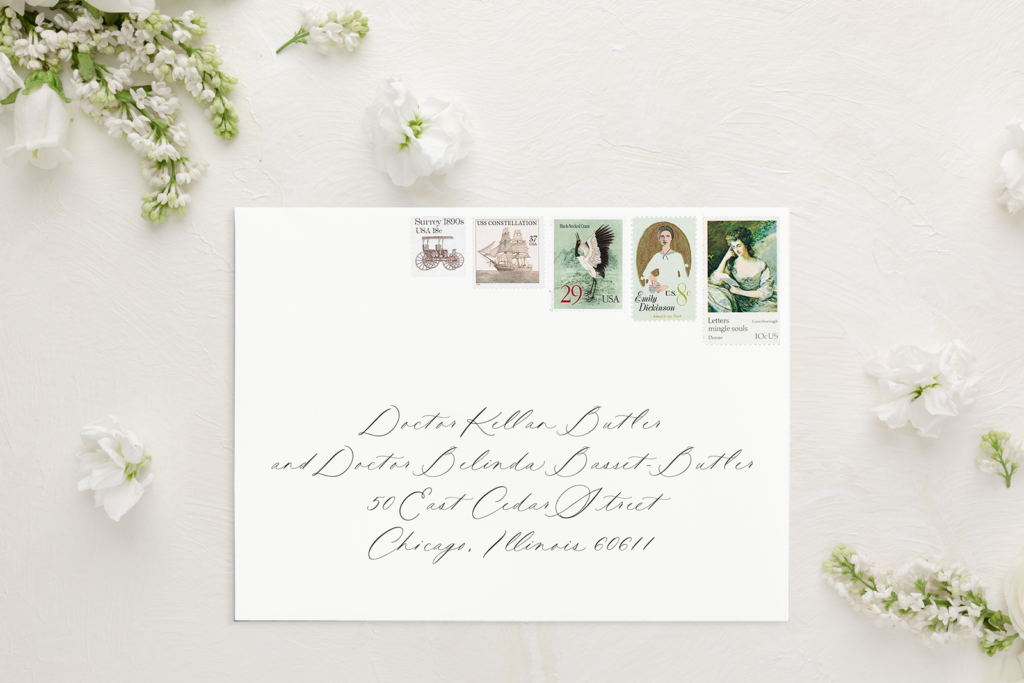
MARRIED COUPLES, JUDGE OR MILITARY
Remember that whichever half of the couple “outranks” the other (i.e. a doctor, member of the military, or some other profession that includes a title) goes first, regardless of gender. All military titles should be spelled out. According to traditional etiquette, a man’s first name should never be separated from his last name, even if his partner has a higher rank and is listed first.
Single Guests
UNMARRIED WOMAN
Use “Ms.” for unmarried women over the age of 18. If he is invited to bring a guest, be sure to denote this on the envelope by including “and Guest” or the guest’s full name, if known, written on the line below the invitee’s name.


UNMARRIED MAN
For a man over 18 years of age, use “Mr.” If he is invited to bring a guest, be sure to denote this on the envelope by including “and Guest” or the guest’s full name, if known, written on the line below the invitee’s name.


NON-BINARY PERSON
The correct title for non-binary individuals (those who identify as “they”) is “Mx.” If you’re ever unsure what pronouns your guest uses, just ask them! They will appreciate you going the extra mile to get it right.

A WIDOW
Ask a close family member whether she would prefer to be addressed by her married name or her husband’s name.
A DIVORCEE
Use Mrs. or Ms. coupled with her ex-husband’s last name, if she still uses it, or her maiden name.
If you encounter any other sticky addressing situations, please email me at erin@lupineletters.com. I can help you best format it for the situation! Happy Addressing!
For more on wedding etiquette, see the Wedding Invitation Etiquette Series on the Blog
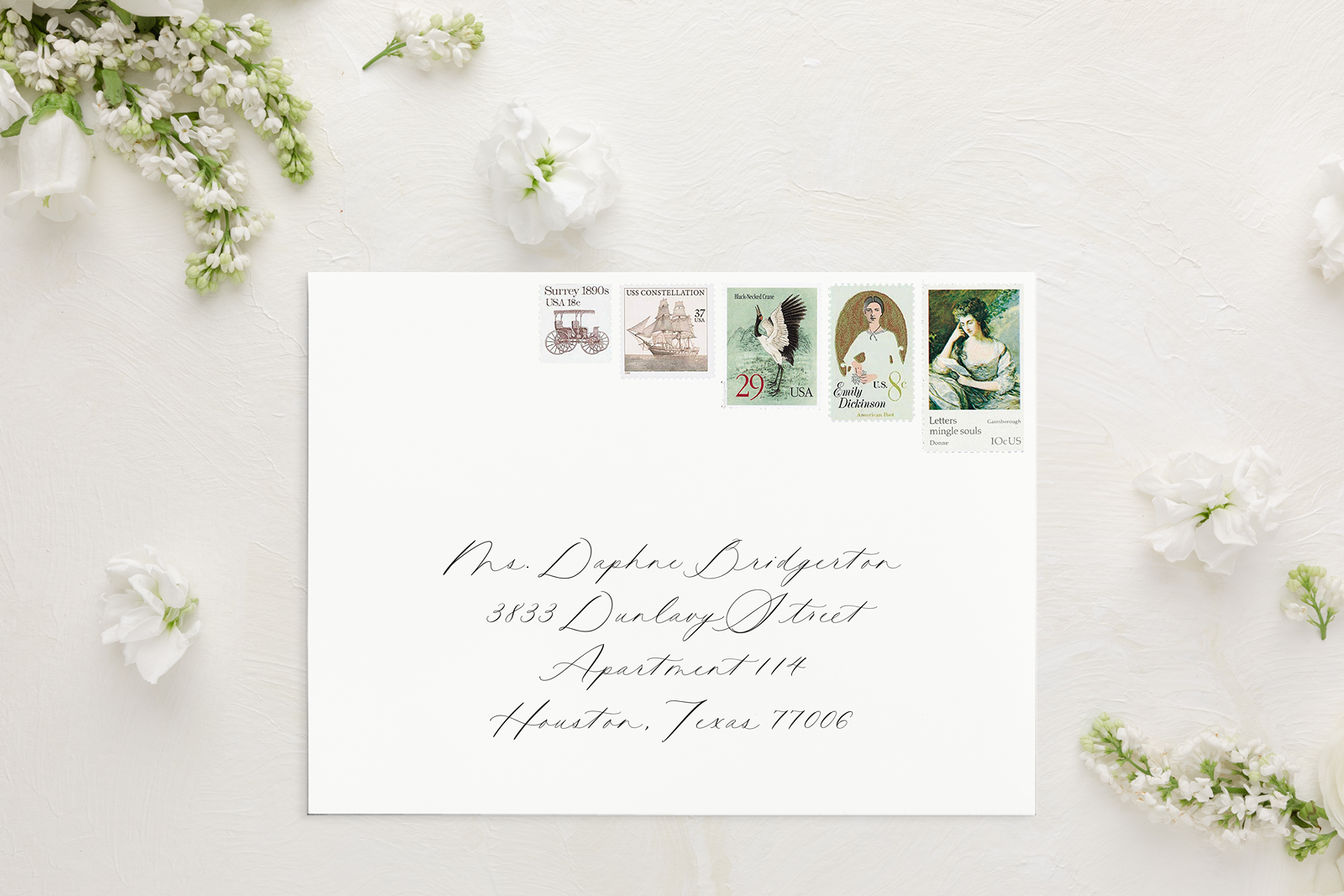
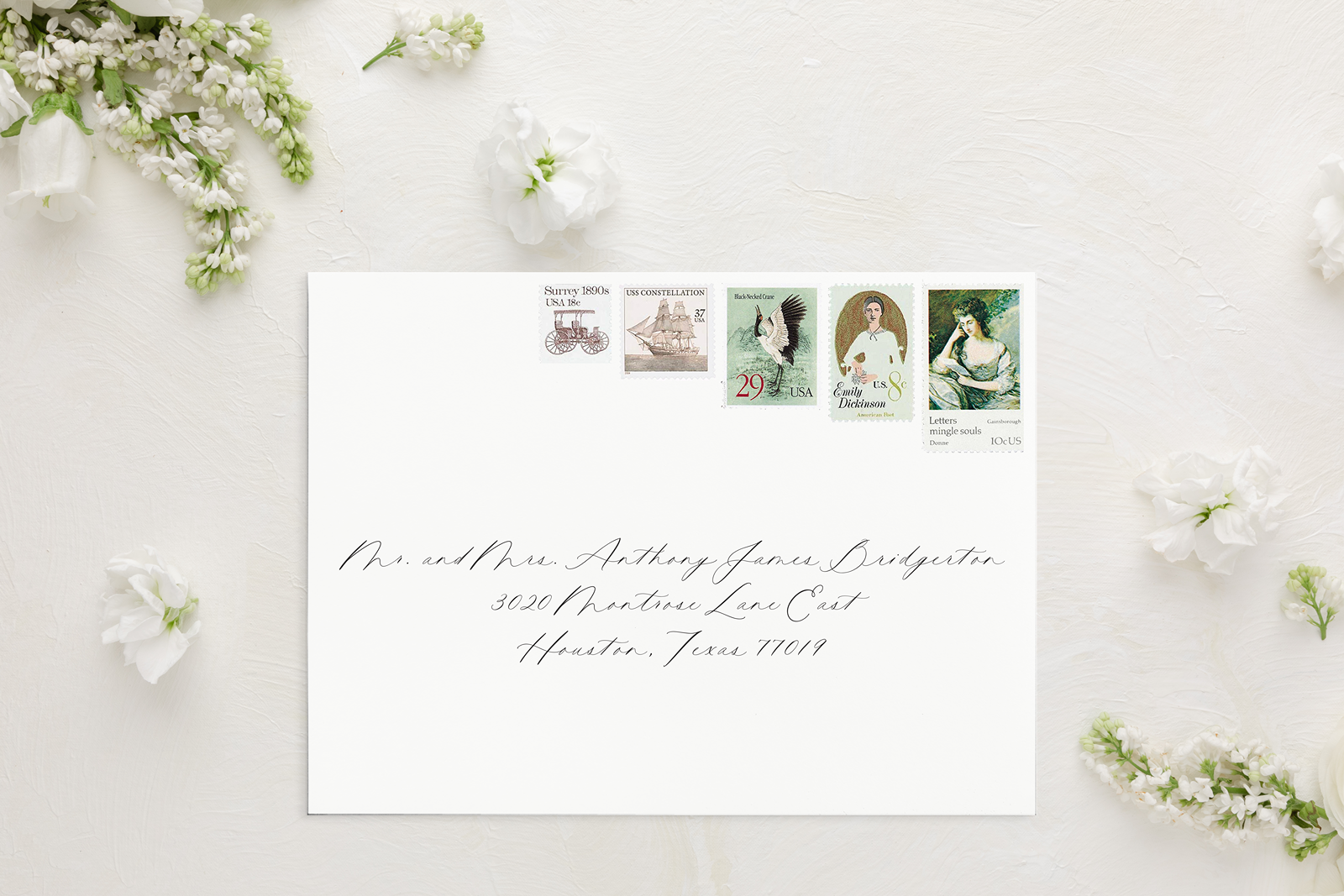
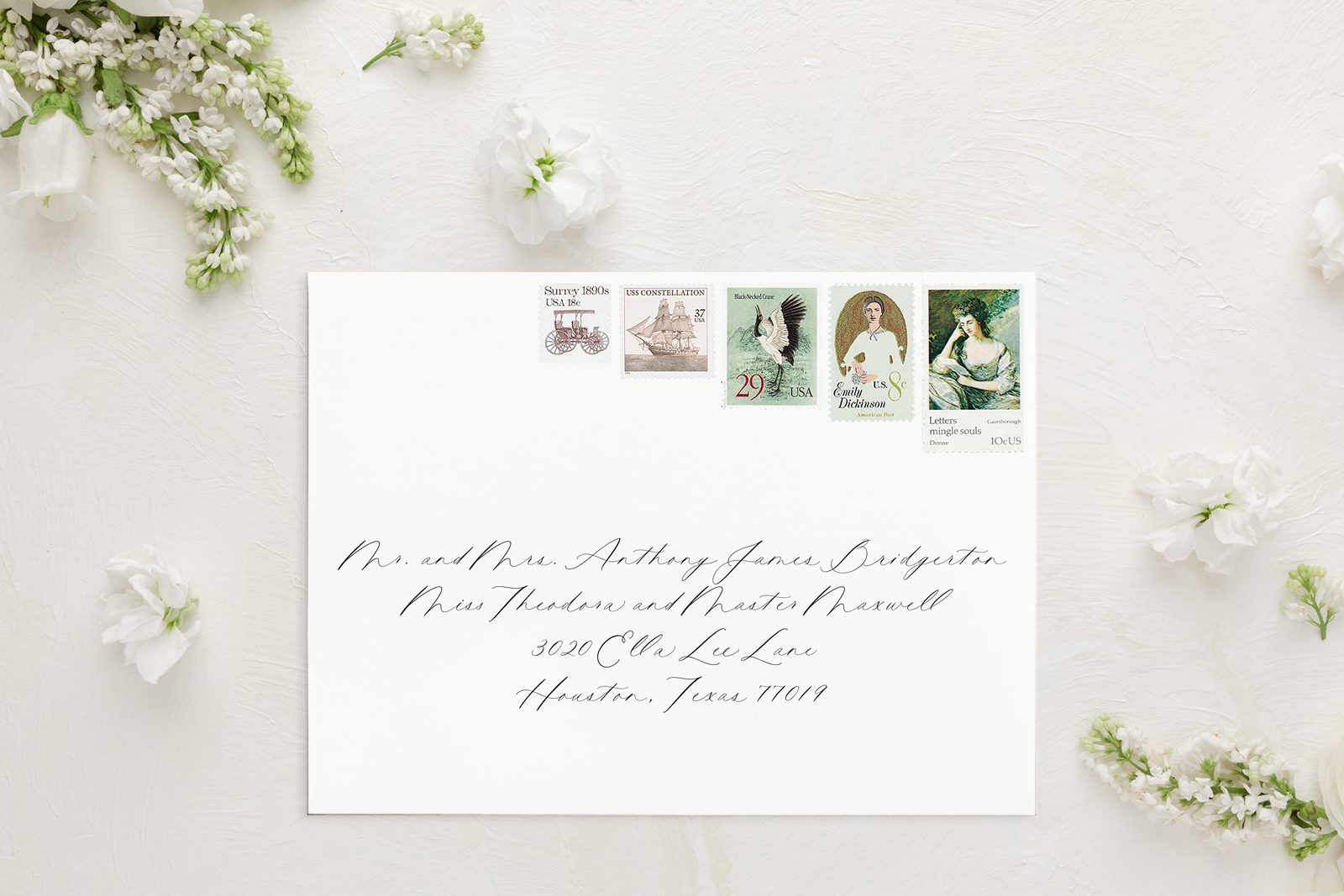
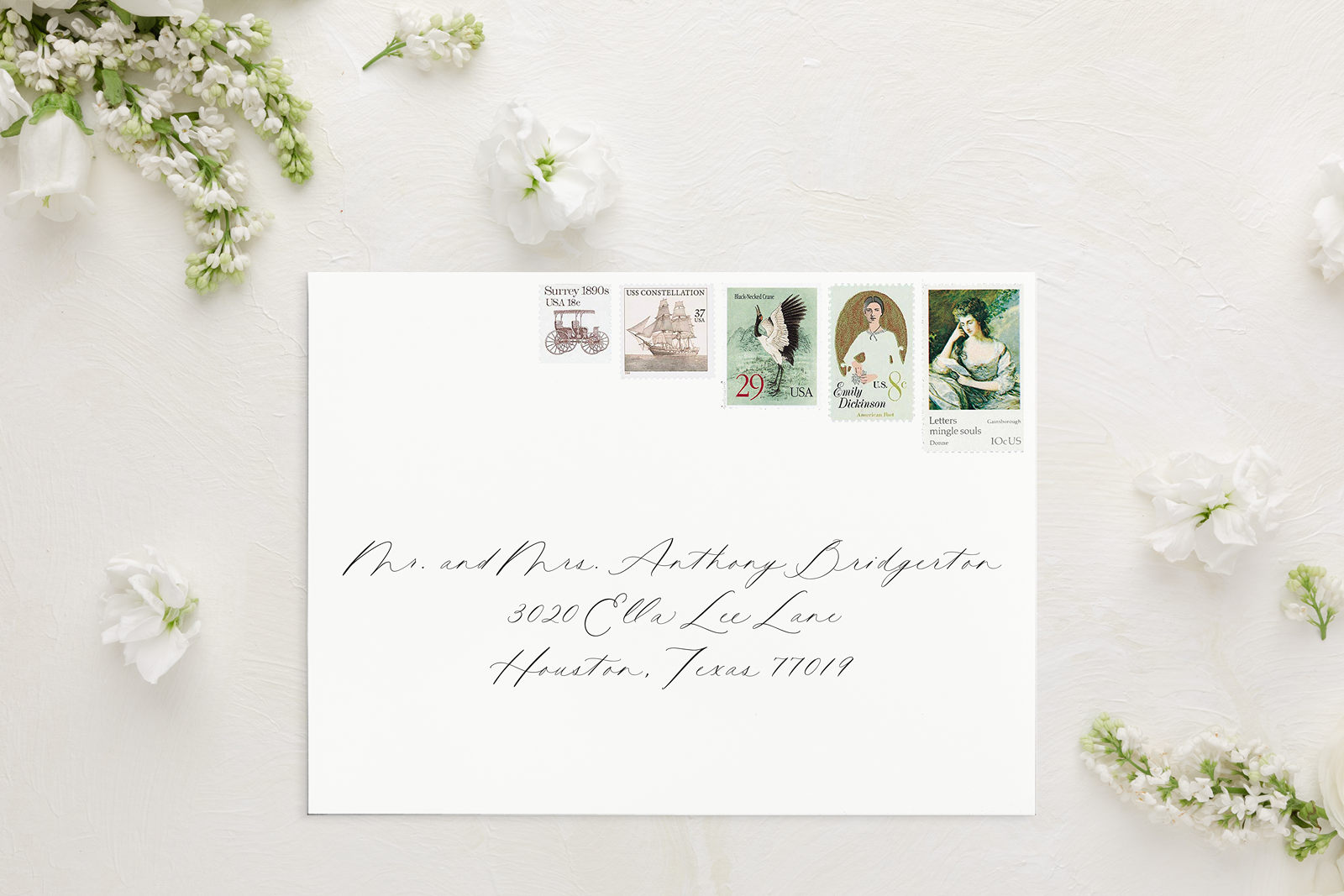

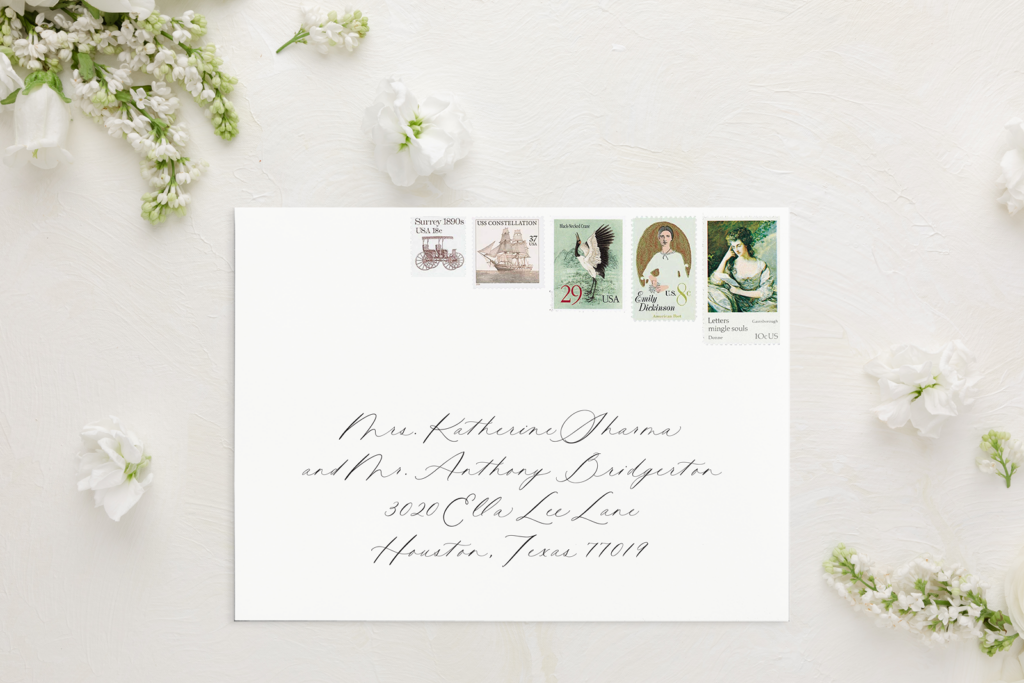










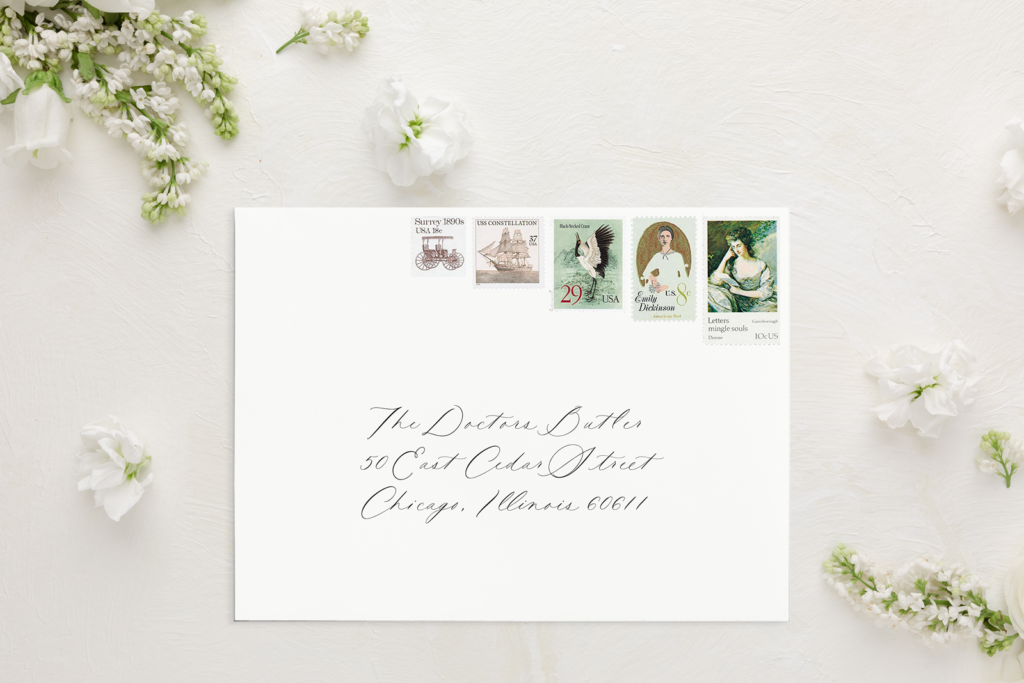




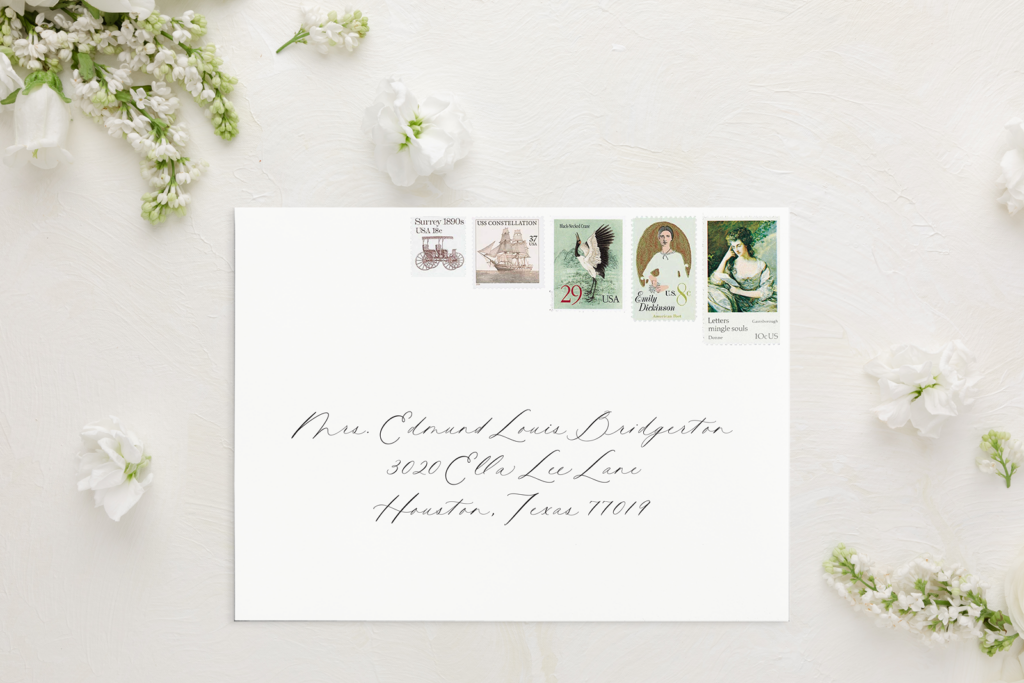
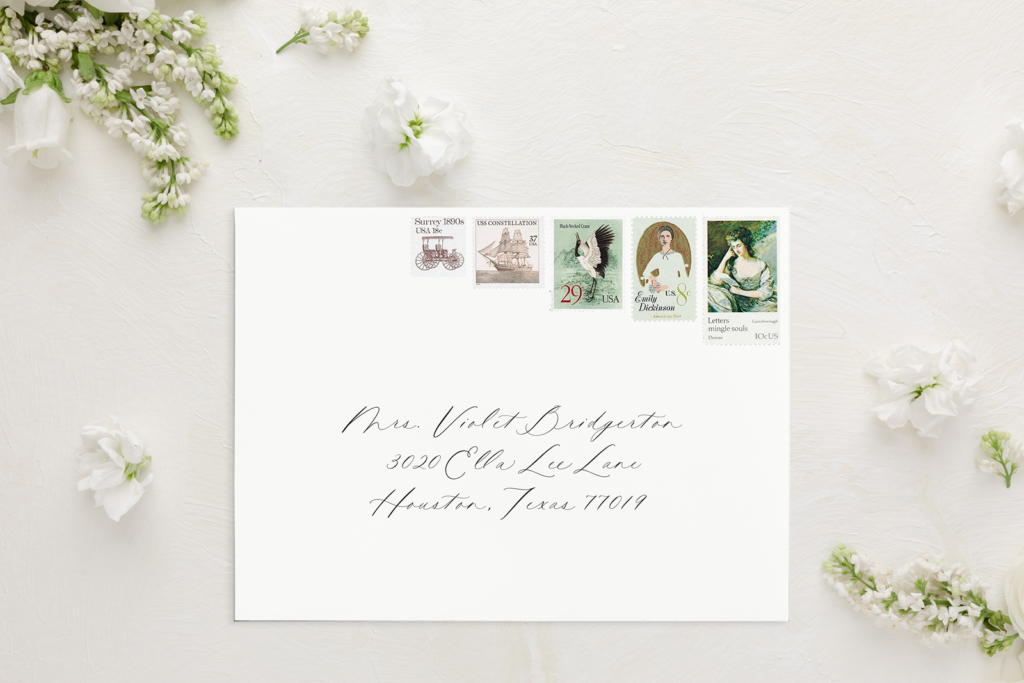


add a comment
+ COMMENTS